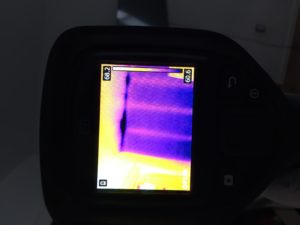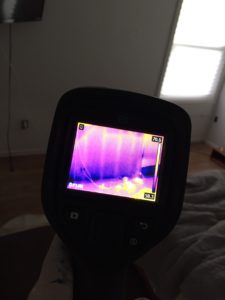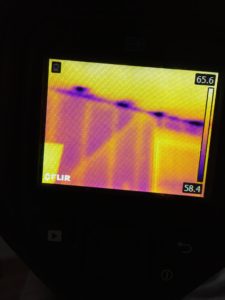Energy Conservation in the Home
Many older homes lack insulation or enough insulation. By using my thermal imagery camera i can see the areas of the walls and ceiling that need more insulation .by improving the building envelope and raising R-value , i can reduce my furnace energy consumption in the winter and summer.
Keeping cool air inside longer in summer and warm air inside longer in the winter.
Video of a simple step to increase R-value in Walls and Attic.
- a cavity wall has a U-value of 1.6 W/m²
- a solid brick wall has a U-value of 2.0 W/m²
- a double glazed window has a U-value of 2.8 W/m².
How to calculate how much insulation you need
- Measure the with of an exterior wall
- Measure the height of the wall
- measure the height and width of any windows or doors in the wall
- multiply the measurements to find the area of each door or window and subtract from the square foot of the wall
- Repeat for all exterior walls of the home
- measure the distance between tone framing stud to the next this can tell you what width of insulation to buy.
Wikipedia Definition of R-Value

R-Value is a measure of thermal resistance for materials and assemblies of materials ( such as insulation panels, floors, and walls in the building and construction industry . It gives an indication of how quickly they will lose heat (their thermal resistance).
The higher the value of R, the better the thermal performace and heat retention of the material or assembly , and the slower any heat loss.
 The R-value for a given material or assembly depends on its resistance to heat conduction, as well as the thickness and (for loose or porous material) any heat losses due to convection and radiative heat transfer. However it does not account for the radiative or convective properties of the material’s surface, which may be an important factor for some applications. R varies with temperature but in construction it is common to treat it as being constant for a given material (or assembly). It is closely related to the thermal transmittance (U-value) of a material or assembly, but is easier to manipulate in some calculations since it can be simply added for materials and assemblies that are arranged in layers, or scaled proportionately if the thickness of a material changes. R-values expressed in United States customary units are about 5.67 times larger than those expressed in metric (SI) units.
The R-value for a given material or assembly depends on its resistance to heat conduction, as well as the thickness and (for loose or porous material) any heat losses due to convection and radiative heat transfer. However it does not account for the radiative or convective properties of the material’s surface, which may be an important factor for some applications. R varies with temperature but in construction it is common to treat it as being constant for a given material (or assembly). It is closely related to the thermal transmittance (U-value) of a material or assembly, but is easier to manipulate in some calculations since it can be simply added for materials and assemblies that are arranged in layers, or scaled proportionately if the thickness of a material changes. R-values expressed in United States customary units are about 5.67 times larger than those expressed in metric (SI) units.
 R is expressed as the thickness of the material normalized to the thermal conductivity, and under uniform conditions it is the ratio of the temperature difference across an insulator and the (heat transfer per unit area per unit time, Q ˙ A {\displaystyle {\dot {Q}}_{A}}
R is expressed as the thickness of the material normalized to the thermal conductivity, and under uniform conditions it is the ratio of the temperature difference across an insulator and the (heat transfer per unit area per unit time, Q ˙ A {\displaystyle {\dot {Q}}_{A}} 

